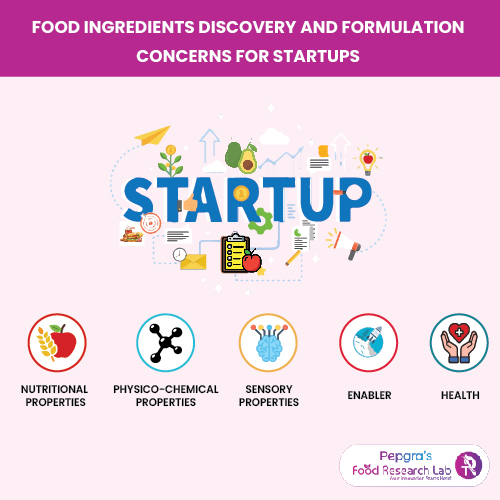
Food ingredient discovery and formulation concerns for startups
Introduction
Although everyone in the food ingredients development business may believe they are familiar with the majority of recent industrial ingredient discoveries, as the world’s population rises and nutritional need rises, new sources of macronutrients are quickly entering the picture.
In addition to requiring enough nutrition, today’s customers are continuously looking for innovative ways to enhance their sense of self-actualization and raise their standard of living via wellness and health preservation. These market forces keep the food ingredients development sector on its toes since most firms use food ingredient analysis and new ingredient discoveries are still at the top of corporate priorities.
Customers urge food producers to stop using artificial substances. A growing range of organically derived compounds, such as colours made from fruits and vegetables and antimicrobials and food preservatives made from herbs, are now available due to this demand. Many food scientists want to reduce the amount of salt or added sugar in goods. The food research lab offers some feasible solutions for startup concerns regarding the food ingredient discovery and formulation.
Major issues of food ingredient discovery
Resources in the world are under growing stress as a result of increased global demand for a secure food supply. Producing enough food in a sustainable manner to feed the world’s expanding population is a problem for farmers and food businesses. Many of the remedies are heavily reliant on their ingredients. The ingredient discovery thus plays a major role. The undiscovered is more than what we have explored.
Consumer tastes and behaviours are always evolving. We are aware that keeping up with the times is insufficient; in order to remain current, one must predict the next major trend. Make sure your food and food ingredient development are properly situated to be a part of fascinating new ingredient developments by letting committed specialists work with you. Since finding novel substances to use commercially is still a top priority for board meetings, most businesses use various ingredient discovery methods.
Consumers, more than any previous generation, desire rapid access to better product understanding due to the rapid exponential boom in information technology breakthroughs. This means that the next phase of economic growth for the food and nutrition sector will be driven by nutrition-based technology, which gives consumers more control over their own health by giving them access to verified information about the therapeutic benefits of natural ingredients and supplements for a range of conditions.
Consumers nowadays educate themselves about functional food ingredients and the truth of the health claims that go along with them, gaining the confidence to voice their opinions on the advantages and safety of food items and determining which aspects of food, such as sustainability and naturalness, are significant to them. Standardization and openness are especially important when it comes to health claims made for additives made by the food and nutrition industries.

A new pathway to Ingredient Discovery
A strategy should be created to standardize health claims, similar to E-numbers, which is an area of study that is currently active since studies demonstrate that consumers prefer simpler health claims. Since some of the chemicals used in food processing and preservation have sparked health concerns and a bad consumer impression, consumers are presently striving for more natural goods.
Review your ingredient in the appropriate food matrices. Conduct research to show the stability of your component, both on its own and in final goods. Create and validate analytical techniques to satisfy particular testing needs. If toxicological data are available, provide an informal sensory evaluation. Analyze particle size for the Characterization of nanomaterials.
Another forthcoming issue found is the staggering growth of R&D in startups. This very issue can impact Food ingredient discovery. Bioactive ingredients in natural goods that promote health have typically been stumbled upon. A deficiency syndrome has frequently been linked causally to a condition that has been seen to be associated with the absence of a necessary nutrient. On the other hand, the existence of several dietary components has been linked to positive health effects. Accidental ingredient discoveries highlight the urgent need for a more effective functional food component characterization pipeline supported by technology.
High-throughput (HTP) screening introduced the first significant technical revolution in the bioactive compound and also functional ingredient discovery and Characterization. This was addressed above. These platforms were developed to enable high-throughput fractionation, identification, and quantification of (expected to be novel) natural bioactive in light of the diversity of functionalities of compounds present in the natural product and food space and the resulting potential for therapeutic effects. A combination of technological advances in multiplexed and miniaturized separation helped to spur growth.
The ingredient discovery, food ingredient analysis, and food ingredient testing never stop due to the ongoing global need for foods that promote health and well-being, which opens more opportunities in food ingredient discovery.
Conclusion :
Our goal is to broaden your horizons by introducing you to novel applications and marketplaces for those whose constituents are readily available on the market. We can assist you with essential study to make the most of your components’ potential, Product formulation to highlight your elements in certain applications of your targets as market demands, Optimizing concepts and getting ready for client sales events, benchmarking against competitors to monitor performance and Characterization and food ingredient analysis.





